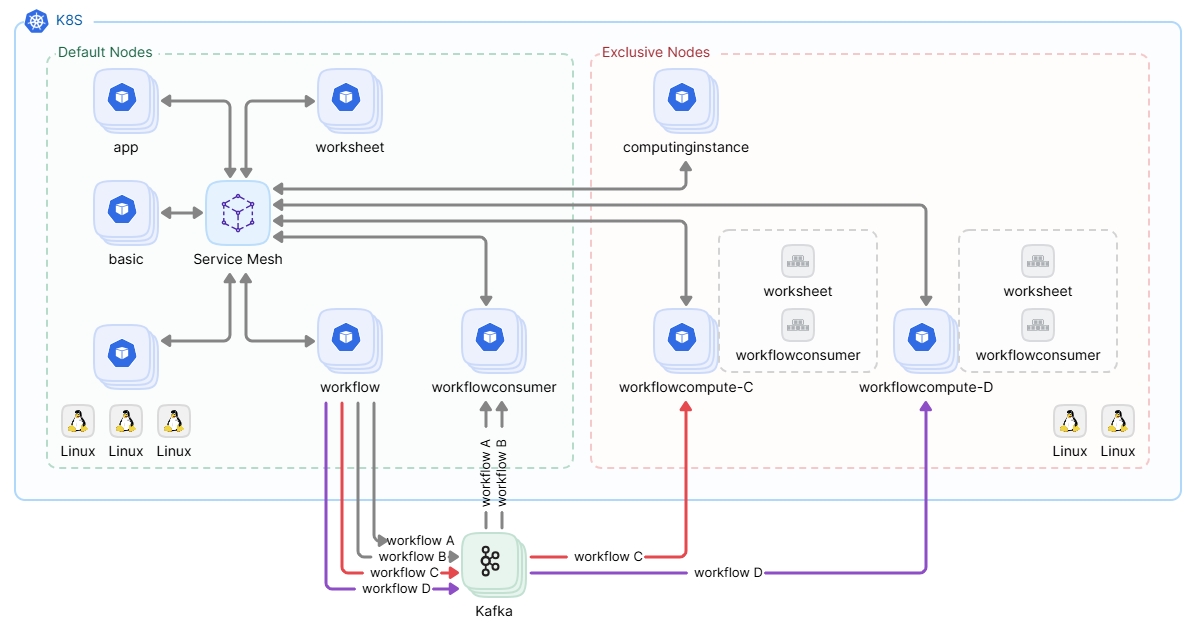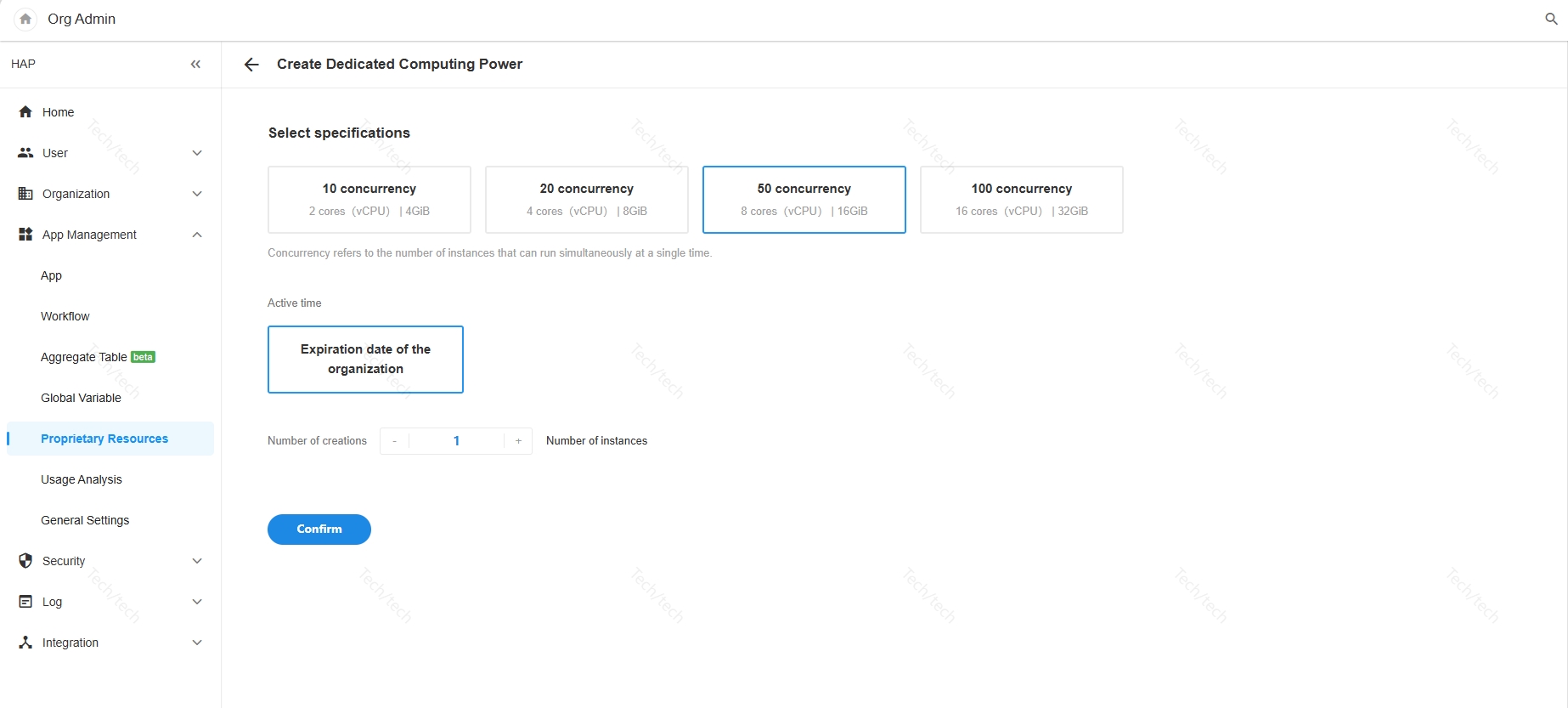Exclusive Computing Power
What is Exclusive Computing Power
Exclusive computing power is an independent resource service provided by the platform to ensure the stable and efficient operation of critical workflows. By adding important workflows to exclusive computing power, it avoids the impact of other process blockages on the platform.
Exclusive computing power does not increase the execution speed of the workflows themselves, but ensures that workflows in exclusive computing power can be executed stably without being affected by other workflows.
The core advantages of exclusive computing power are:
- Independent Resources: Allocate independent computing resources to each exclusive computing power to ensure that workflows have exclusive resources and are not affected by other workflows.
- Stable Execution: Workflows in exclusive computing power have independent Kafka Topic queues, avoiding messages competition in public queues, thus ensuring that workflows can be executed stably and efficiently.
- Isolation & Protection: By isolating critical workflows from regular workflows, it effectively reduces the impact of congestion caused by regular workflows.
Operation principles:
- Trigger & Execution: When a workflow in exclusive computing power is triggered, it enters its independent Kafka Topic queue.
- Independent Consumption: The exclusive consumption service will consume messages in the Topic in real-time and execute the workflow according to the preset logic.
- Resource Guarantee: The computing resources and storage space used by exclusive computing power are all exclusive resources and will not be occupied by other workflows.
Applicable scenarios:
- High-priority workflows: Workflows that require quick response and timely processing.
- Complex workflows: Complex, computationally intensive, and bulk-triggered workflows. (Place them in independent high-specification exclusive resources to avoid these complex workflows queuing in public queues for ordinary workflows)
Deployment Architecture

As shown in the above figure, two new nodes have been added to the existing Kubernetes cluster as dedicated resources for dedicated computing power services. Here, two dedicated computing powers, workflowcompute-C and workflowcompute-D, have been created. After configuring workflow C to use dedicated computing power workflowcompute-C for consumption, the execution of workflow C will use the resources allocated by workflowcompute-C. workflow D is the same.
Use of Exclusive Computing Power
The exclusive computing power service requires an independent key and authorization, and can only be deployed and used in cluster mode.
Once the deployment is completed and the authorization is added, you can choose the instance specifications on the page below for creation.

Concurrency in exclusive computing power instance:
- 20 Concurrency: Represents 20 partitions in an independent Kafka Topic, 20 threads in independent workflow consumption services, and a maximum of 4 cores and 8GB of resources that can be used by independent workflows and worksheets services.
- 100 Concurrency: Represents 100 partitions in an independent Kafka Topic, 100 threads in independent workflow consumption services, and a maximum of 16 cores and 32GB of resources that can be used by independent workflows and worksheets services.
- In theory, the larger the Kafka Topic partition, the larger the thread size of workflow consumption services, and the more workflows can be processed in parallel.
How to choose the specifications for deployment servers?
The exclusive computing power service utilizes the features of Kubernetes to run exclusively in servers isolated from microservices, avoiding the impact of resource occupation by other services. Therefore, deploying the exclusive computing power service requires adding independent servers.
First, plan the required number and specifications of exclusive computing power instances, and then plan the configuration and quantity of deployment servers.
For example: If you need to create 2 exclusive computing power instances of 20 concurrency and 2 instances of 50 concurrency, then a minimum of 2 servers with 16 cores and 32GB each is needed, with each server having a fixed disk of 200GB.